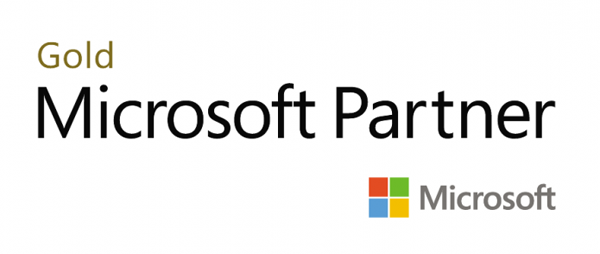Programming in C#, On Demand 20483
- Seminar
- E-Learning
- Zurzeit keine Termine
- 16 Unterrichtseinheiten
- Teilnahmebescheinigung
Seminarnummer: 29402
This MOC on Demand training course teaches developers the programming skills that are required for developers to create Windows applications using the C# language. Students review the basics of C# program structure, language syntax, and implementation details, and then consolidate their knowledge as they build an application that incorporates several features of the .NET Framework 4.5.
Nutzen
In dieser MOC on Demand Version ist eine original MOC Unterlage in digitaler Form enthalten.
After completing this course, students will be able to:
After completing this course, students will be able to:
- Describe the core syntax and features of C#.
- Create and call methods, catch and handle exceptions, and describe the monitoring requirements of large-scale applications.
- Implement the basic structure and essential elements of a typical desktop application.
- Create classes, define and implement interfaces, and create and use generic collections.
- Use inheritance to create a class hierarchy, extend a .NET Framework class, and create generic classes and methods.
- Read and write data by using file input/output and streams, and serialize and deserialize data in different formats.
- Create and use an entity data model for accessing a database and use LINQ to query and update data.
- Use the types in the System.Net namespace and WCF Data Services to access and query remote data.
- Build a graphical user interface by using XAML.
- Improve the throughput and response time of applications by using tasks and asynchronous operations.
- Integrate unmanaged libraries and dynamic components into a C# application.
- Examine the metadata of types by using reflection, create and use custom attributes, generate code at runtime, and manage assembly versions.
- Encrypt and decrypt data by using symmetric and asymmetric encryption.
Zielgruppe
This course is intended for experienced developers who already have programming experience in C, C++, JavaScript, Objective-C, Microsoft Visual Basic®, or Java and understand the concepts of object-oriented programming.
This course is not designed for students who are new to programming; it is targeted at professional developers with at least one month of experience programming in an object-oriented environment.
This course is not designed for students who are new to programming; it is targeted at professional developers with at least one month of experience programming in an object-oriented environment.
Anforderungen
Developers attending this course should already have gained some limited experience using C# to complete basic programming tasks. More specifically, students should have hands-on experience using C# that demonstrates their understanding of the following:
- How to name, declare, initialize and assign values to variables within an application.
- How to use:
- arithmetic operators to perform arithmetic calculations involving one or more variables;
- relational operators to test the relationship between two variables or expressions;
- logical operators to combine expressions that contain relational operators.
- How to create the code syntax for simple programming statements using C# language keywords and recognize syntax errors using the Visual Studio IDE.
- How to create a simple branching structure using an IF statement.
- How to create a simple looping structure using a For statement to iterate through a data array.
- How to use the Visual Studio IDE to locate simple logic errors.
- How to create a Function that accepts arguments (parameters and returns a value of a specified type.
- How to design and build a simple user interface using standard controls from the Visual Studio toolbox.
- How to connect to a SQL Server database and the basics of how to retrieve and store data.
- How to sort data in a loop.
- How to recognize the classes and methods used in a program.
Inhalte
Module 1: Review of C# Syntax
This module reviews the core syntax and features of the C# programming language. It also provides an introduction to the Visual Studio 2012 debugger.
Lesson
Module 2: Creating Methods, Handling Exceptions, and Monitoring Applications
This module explains how to create and call methods, catch and handle exceptions. This module also describes the monitoring requirements of large-scale applications.
Lesson
Module 3: Developing the Code for a Graphical Application
This module describes how to implement the basic structure and essential elements of a typical desktop application, including using structures and enumerations, collections, and events.
Lesson
Module 4: Creating Classes and Implementing Type-safe Collections
This module explains how to create classes, define and implement interfaces, and create and use generic collections. This module also describes the differences between value types and reference types in C#.
Lesson
Module 5: Creating a Class Hierarchy by Using Inheritance
This module explains how to use inheritance to create a class hierarchy and extend a .NET Framework class. This module also describes how to create generic classes and define extension methods.
Lesson
Module 6: Reading and Writing Local Data
This module explains how to read and write data by using file input/output (I/O) and streams, and how to serialize and deserialize data in different formats.
Lesson
Module 7: Accessing a Database
This module explains how to create and use an entity data model for accessing a database, and how to use LINQ to query and update data.
Lesson
Module 8: Accessing Remote Data
This module explains how to use the types in the System.Net namespace, and WCF Data Services, to query and modify remote data.
Lesson
Module 9: Designing the User Interface for a Graphical Application
This module explains how to build and style a graphical user interface by using XAML. This module also describes how to display data in a user interface by using data binding.
Lesson
This module reviews the core syntax and features of the C# programming language. It also provides an introduction to the Visual Studio 2012 debugger.
Lesson
- Overview of Writing Applications using C#
- Datatypes, Operators, and Expressions
- C# Programming Language Constructs
Module 2: Creating Methods, Handling Exceptions, and Monitoring Applications
This module explains how to create and call methods, catch and handle exceptions. This module also describes the monitoring requirements of large-scale applications.
Lesson
- Creating and Invoking Methods
- Creating Overloaded Methods and Using Optional and Output Parameters
- Handling Exceptions
- Monitoring Applications
Module 3: Developing the Code for a Graphical Application
This module describes how to implement the basic structure and essential elements of a typical desktop application, including using structures and enumerations, collections, and events.
Lesson
- Implementing Structs and Enums
- Organizing Data into Collections
- Handling Events
Module 4: Creating Classes and Implementing Type-safe Collections
This module explains how to create classes, define and implement interfaces, and create and use generic collections. This module also describes the differences between value types and reference types in C#.
Lesson
- Creating Classes
- Defining and Implementing Interfaces
- Implementing Type-safe Collections
Module 5: Creating a Class Hierarchy by Using Inheritance
This module explains how to use inheritance to create a class hierarchy and extend a .NET Framework class. This module also describes how to create generic classes and define extension methods.
Lesson
- Creating Class Hierarchies
- Extending .NET Framework Classes
- Creating Generic Types
Module 6: Reading and Writing Local Data
This module explains how to read and write data by using file input/output (I/O) and streams, and how to serialize and deserialize data in different formats.
Lesson
- Reading and Writing Files
- Serializing and Deserializing Data
- Performing I/O Using Streams
Module 7: Accessing a Database
This module explains how to create and use an entity data model for accessing a database, and how to use LINQ to query and update data.
Lesson
- Creating and Using Entity Data Models
- Querying Data by Using LINQ
- Updating Data by Using LINQ
Module 8: Accessing Remote Data
This module explains how to use the types in the System.Net namespace, and WCF Data Services, to query and modify remote data.
Lesson
- Accessing Data Across the Web
- Accessing Data in the Cloud
Module 9: Designing the User Interface for a Graphical Application
This module explains how to build and style a graphical user interface by using XAML. This module also describes how to display data in a user interface by using data binding.
Lesson
- Using XAML to Design a User Interface
- Binding Controls to Data
- Styling a User Interface


